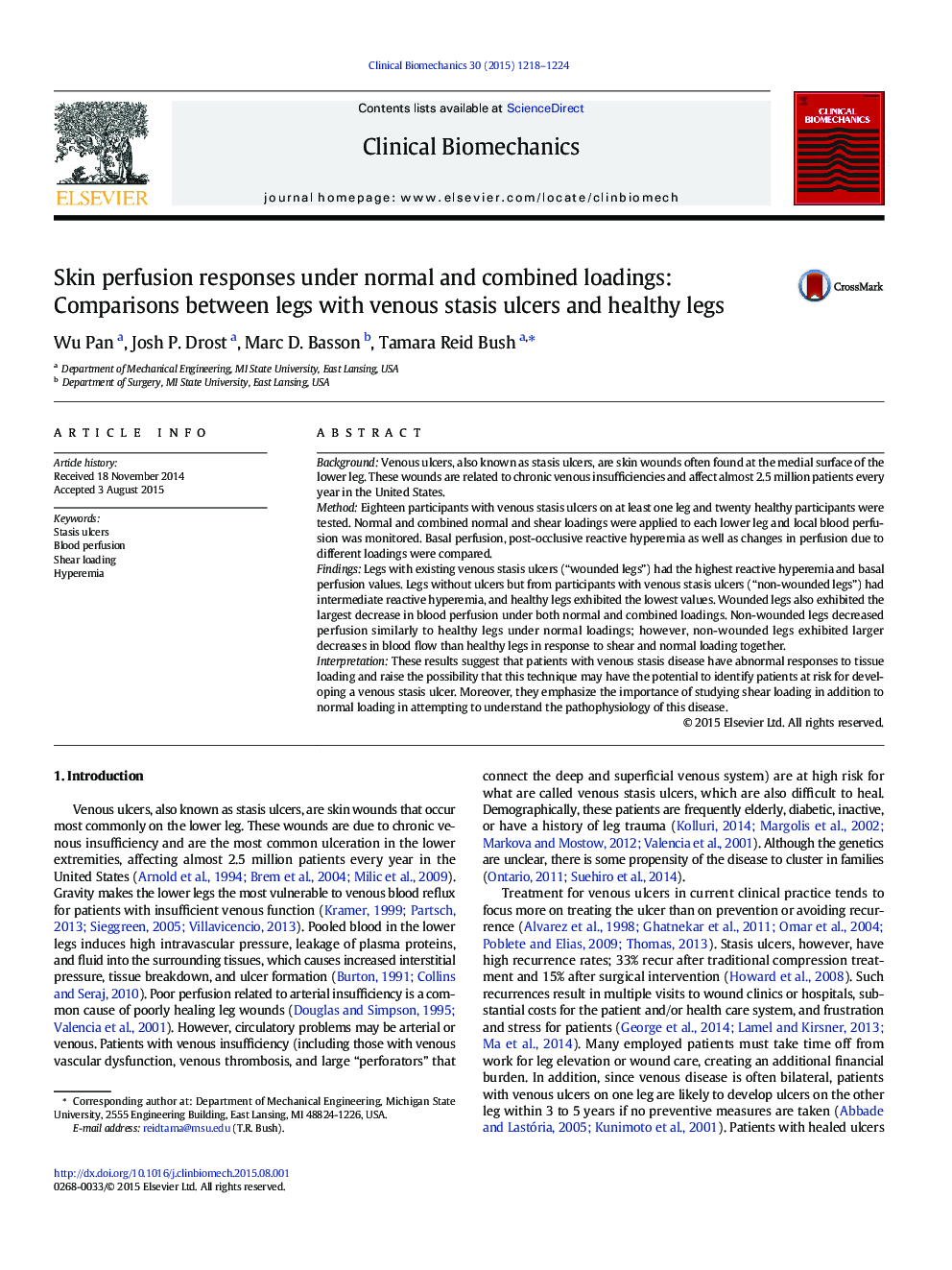| Article ID | Journal | Published Year | Pages | File Type |
|---|---|---|---|---|
| 4050095 | Clinical Biomechanics | 2015 | 7 Pages |
•Differences exist in skin perfusion between wounded, non-wounded, and healthy legs.•There is a need to study both normal and shear loading in both wounded and non-wounded limbs.•This technique shows potential for identifying patients at risk of developing a venous stasis ulcer.•It is a novel approach for measuring skin perfusion while loading the region.
BackgroundVenous ulcers, also known as stasis ulcers, are skin wounds often found at the medial surface of the lower leg. These wounds are related to chronic venous insufficiencies and affect almost 2.5 million patients every year in the United States.MethodEighteen participants with venous stasis ulcers on at least one leg and twenty healthy participants were tested. Normal and combined normal and shear loadings were applied to each lower leg and local blood perfusion was monitored. Basal perfusion, post-occlusive reactive hyperemia as well as changes in perfusion due to different loadings were compared.FindingsLegs with existing venous stasis ulcers (“wounded legs”) had the highest reactive hyperemia and basal perfusion values. Legs without ulcers but from participants with venous stasis ulcers (“non-wounded legs”) had intermediate reactive hyperemia, and healthy legs exhibited the lowest values. Wounded legs also exhibited the largest decrease in blood perfusion under both normal and combined loadings. Non-wounded legs decreased perfusion similarly to healthy legs under normal loadings; however, non-wounded legs exhibited larger decreases in blood flow than healthy legs in response to shear and normal loading together.InterpretationThese results suggest that patients with venous stasis disease have abnormal responses to tissue loading and raise the possibility that this technique may have the potential to identify patients at risk for developing a venous stasis ulcer. Moreover, they emphasize the importance of studying shear loading in addition to normal loading in attempting to understand the pathophysiology of this disease.
